COP26: How this climate summit was different, and what needs to happen next
Banner image: Marches through the streets of Glasgow during the two weeks of COP26. (Credit: The Left)
The 26th United Nations Climate Change Conference of the Parties, a.k.a. COP26, concluded Sunday in Scotland, after two lively weeks of protests, events and negotiations between diplomats from 197 countries that vowed nearly three decades ago to do something about our warming planet.
Their main objective? To establish a rulebook spelling out what countries will do to comply with the 2015 Paris Agreement and limit global warming to no more than 3.6 degrees Fahrenheit (2 degrees Celsius) above pre-industrial levels, aiming for a more ambitious 2.7 F (1.5 C) limit.
The conference, CU Boulder experts say, was different in many ways from its 25 predecessors.
Both media attention and youth participation were unprecedented. And the resulting Glasgow Climate Pact, while vaguely worded, was a major accomplishment, constituting the first U.N. climate deal to explicitly mention the need to move away from coal power and subsidies for fossil fuels. Many nations, including the U.S., also agreed to reduce methane emissions 30% by 2030.
This on its own is not enough, say faculty members, students and activists who attended. Country leaders must now follow through at home with concrete policies.
The agreed upon pact also calls on governments to return to COP27 next year in Egypt with even stronger plans—to cut their emissions in half by 2030—if the planet is to have any hope of, as they put it, “keeping 1.5 alive.”
Here’s a look at what got done, and what needs to happen next:
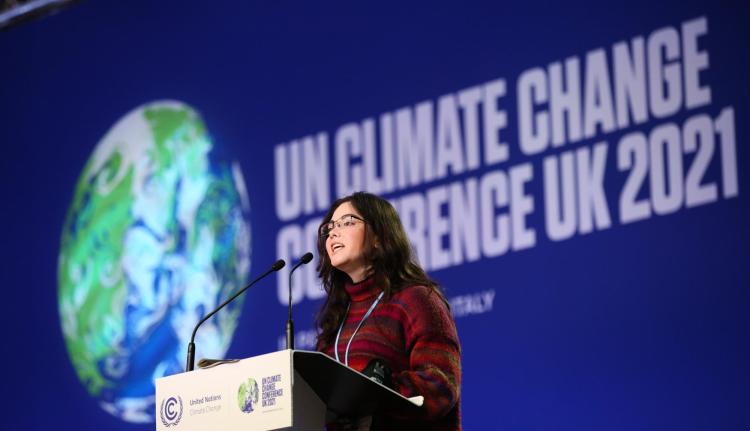
A young speaker on the main stage of COP26. (Credit: UNclimatechange)
Youth activists played an unprecedented role
On Nov. 6, 2021, more than 100,000 people marched through the streets of Glasgow, Scotland as part of the Fridays For Future protests, joined by millions of other young people in cities around the world. The next day, marches continued as part of The People’s Summit for Climate Justice. And on Friday, Nov. 12, thousands more marched in a massive walkout of the summit.
“The negotiators are not listening to the people outside,” said Gina Fiorile, program and communication coordinator for the Climate Literacy and Energy Awareness Network (CLEAN) at the Cooperative Institute for Research in Environmental Sciences (CIRES), while at COP26 in Glasgow. “There are two COPs happening: one outside and one inside.”
Emily Benton Hite, who received her doctorate in cultural anthropology from CU Boulder this summer, participated in the Nov. 6 and 7 marches.
“We all recognize that the leaders know how to deliver inspirational sound bites, but there is no follow through in terms of action on the ground,” said Hite. “And people are ready, willing, and able to take that action themselves. We are motivated to step up and demand that just, equitable, and sustainable actions are taken now—not 20 to 30 years from now—to address the climate crisis.”
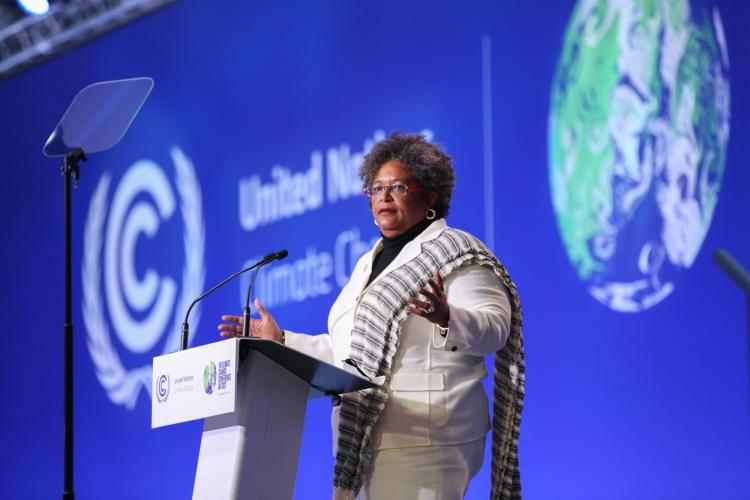
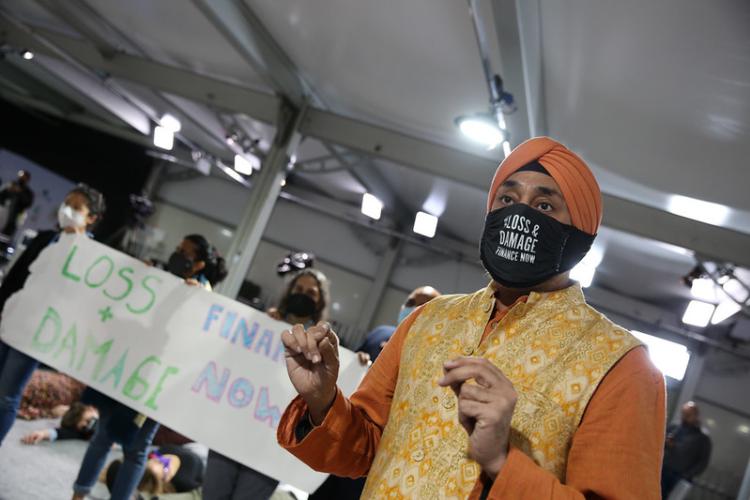
Top: Mia Mottley, prime minister of Barbados, delivers a passionate speech about how her country will be affected by climate change. Bottom: Demonstrators advocate for the missing funding promised for loss and damage. (Credit: UNclimatechange)
Developing countries asked for what’s due
Finance was a hot topic this year, including tough discussions about who should foot the bill for problems largely caused by developed nations.
"If we are going to take action on climate change right now, it’s going to be expensive. But it’s going to cost much more to help protect vulnerable people and ecosystems,” said Marilyn Averill, senior fellow with the Getches-Wilkinson Center for Natural Resources, Energy and the Environment at Colorado Law.
The emphasis on finance at this year’s event is a good sign, she said. But the failure to follow through on previously promised finances has been a disappointment.
In 2009, wealthier countries agreed to help vulnerable nations reduce their emissions and adapt to the effects of climate change with $100 billion annually in "climate finance,” to be available by 2020. This goal has not yet been met, and poorer countries most at risk from sea level rise, intensifying storms and droughts, left the summit all but empty handed: Only a line of text in the final agreement calls for the funds to be delivered "urgently.”
While Scotland offered a contribution of 2 million pounds to a “loss and damage” fund, no other nations joined them in their commitment. Wealthier nations such as the U.S. balked at taking any timely action, instead continuing to defer the issue.
Countries did, however, agree to fund the Santiago Network, a U.N. entity created in 2019 to help developing countries minimize damage from climate change through proactive assistance. Wealthier nations also agreed to new pledges, totaling almost 1 billion dollars, for two key U.N.-backed funds which would support adaptation for nations vulnerable to climate change.
“The inching forward is nowhere near what’s needed,” said Max Boykoff, professor and director of the environmental studies program, fellow in the Cooperative Institute for Research in Environmental Sciences (CIRES) and lead project investigator of the Media and Climate Change Observatory (MeCCO). “The biggest thing we haven’t reckoned with is historical emissions.”
He’s referring to the fact that over the past 170 years, since human-produced planet-warming emissions began, rich countries have been responsible for half of them. And according to the Global Carbon Project, the U.S. alone is responsible for 24.6% of these emissions.
Until these historical emissions are reckoned with on an international scale, he predicts countries who have emitted much less over the past two centuries—like India, with only 3.2%—will continue to feel let down by rich countries and may not commit to reducing and eliminating their use of fossil fuels.
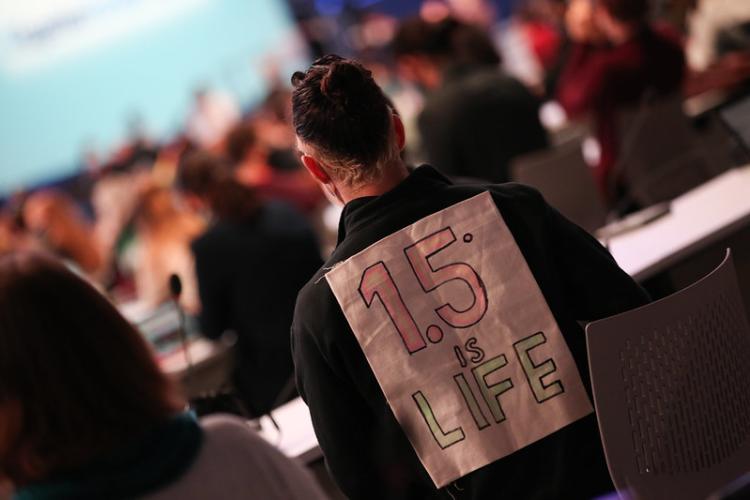
An observer sits in the main hall at COP26 talks in Glasgow. (Credit: UNclimatechange)
A strong call to “keep 1.5 alive”
Throughout COP26, a rallying cry arose: “Keep 1.5 alive.” Referring to the 1.5 C (2.7 F) target, this year’s summit focused on this number in a way that hasn’t happened since 2015.
For good reason, said Walt Meier, senior research scientist at the National Snow and Ice Data Center. This is only a global average temperature. That means that arctic, alpine and low-lying tropical regions could see higher temperature increases.
For the arctic, which is already warming two to three times as fast as the rest of the world, that half of a degree Celsius globally could mean as much as 5 C (9 F)—an extreme shift for a region which already balances on the edge of freezing temperatures.
“A couple degrees in Boulder, Colorado is something you maybe don’t notice all that much. But if you go from 31 F to 33 F in the Arctic Ocean, that’s the difference between ice skating and swimming,” said Meier. “You’re looking very much at a changed arctic.”
NSIDC is one of several groups which have asked the UNFCCC to arrange a meeting about the cryosphere (places where water is in its solid form, frozen into ice or snow) at the next inter-sessional climate conference, scheduled to take place in Bonn in June 2022.
Because while negotiations will continue at future COPs, “You can’t negotiate with the melting point of ice,” according to the International Cryosphere Climate Initiative’s State of the Cryosphere Report.
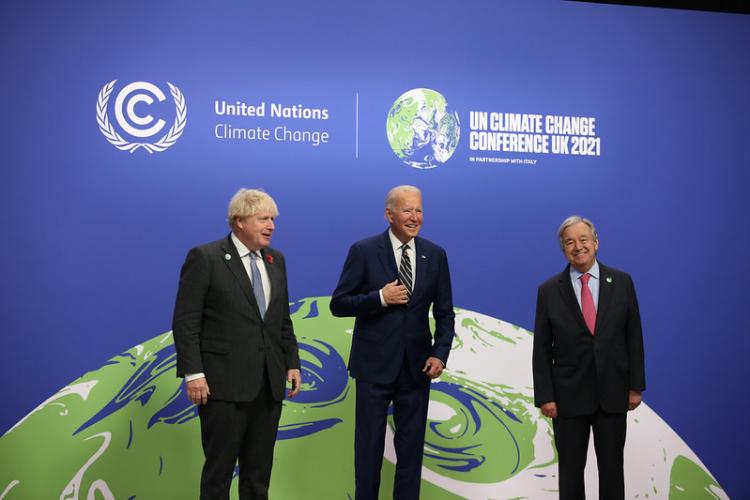
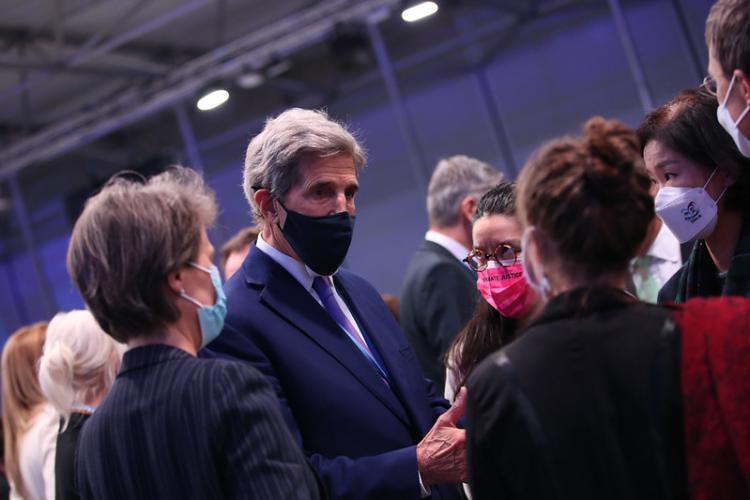
Top: United Kingdom Prime Minister Boris Johnson, United States President Joe Biden and Secretary-General of the United Nations António Guterres pose for a photo during the World Leaders Summit at COP26. Leaders of state must now follow through at home with concrete policies to reduce emissions. Bottom: Secretary of State John Kerry speaks with fellow attendees of COP26. (Credit: UNclimatechange)
Pressure—and temperature—is rising
To meet a 2.7 F (1.5 C) target, the entire world needs to act, and fast: The world has already warmed 2 F (1.1 C), and emissions are expected to rise almost 14% over the next nine years.
The plans which governments have now agreed on to reduce emissions by 2030 still only put the world on track to limit global average warming to 4.3 to 4.5 F (2.4 or 2.5 C), according to the U.N. Environment Program and Climate Action Tracker, a research group. This rise in average global temperature would be devastating for island countries, the arctic and a good deal of the world’s agricultural production.
The Glasgow agreement does speed up the typical five-year timeline for countries to submit new or updated Nationally Determined Contributions (NDCs), however, which is a reason for encouragement, according to Boykoff.
However, these NDCs—country-based emissions reductions plans—may not be enough, as they are voluntary and hard to enforce.
For countries at future conferences, the pressure will only continue to rise—and that doesn’t have to be a bad thing, said Twila Moon, Deputy Lead Scientist at NSIDC.
She encourages leaders to be bold and take advantage of an incredible opportunity.
“We’re at a unique point in history in which the activities that we undertake as individuals and collectively, within this decade, will create a legacy that will shape our earth for tens of thousands of years,” said Moon. “That’s something that’s never happened before in human history. And will not be an opportunity that arises again in the future.”
As a global leader in climate, environmental and energy research, the University of Colorado Boulder is partnering with United Nations Human Rights to co-host the Right Here, Right Now Global Climate Summit in fall 2022. Contact cunews@colorado.edu to receive media updates.


